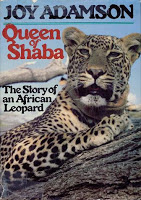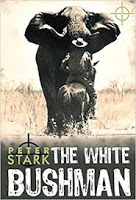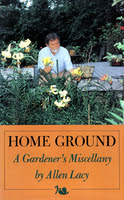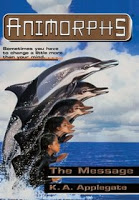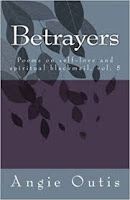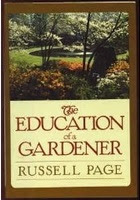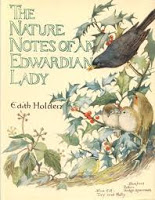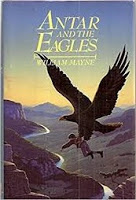the Story of an African Leopard
by Joy Adamson
Joy Adamson, famous for raising the wild lion Elsa of Born Free, went on to raise and release a cheetah as well. Her final ambition was to do the same with a leopard, which had never been attempted before and many cautioned her against it, because leopards were a lot more unpredictable and considered more dangerous than lions and cheetah. It took a long time for her to obtain a leopard cub (with permission from wildlife authorities). The first orphaned cub she acquired died from an overdose of a vaccine, the second one she got seven years later, and it died when left in a hot car too long – very sad. The third orphaned cub that came into her hands remained healthy, and she named it Penny. First it was kept in an enclosure near her home in the bush, but after a lot of consideration she an her small crew of helpers found a suitable location to release the leopard, and they basically moved there and lived out in the bush, letting the leopard roam and keeping tabs on her. They fed her regularly, and supplied her with water to keep her from frequenting the river where they feared she would get taken by a crocodile. They put a radio collar on her (it looks crude and bulky in the photos) but it often fell off so they spent hours searching for the leopard and calling, to find her location and provide for her. The leopard must have learned to hunt eventually, because often she appeared well-fed, but Joy continued to support Penny by taking her food at her regular haunts, even after she birthed a pair of cubs in the wild. She rarely got a glimpse of the new leopard cubs; this big cat was secretive and didn\’t bring her young to visit her surrogate human mother as Elsa had done.
Joy obviously cared a lot about her cats. During the time she was working with Penny she also took charge of an abandoned lion cub for a brief time, and an adult male leopard who was later released into Penny\’s territory in hopes he would become her mate- and she devoted all her efforts and time to their care and watching over them. I\’m amazed she did all this work even though her health was becoming frail- when she first got the cub she suffered a broken ankle from a fall, and had hip replacement surgery. She seemed prone to injury and the leopard itself often turned on her- I can\’t count the number of times she wrote that she was stroking Penny- who appeared to solicit the attention- when the leopard suddenly turned and tore her skin, or bit a hole in her arm! It didn\’t deter Joy from continuing the project. She was careful to keep other people at a distance, only one or two men who worked directly with her became trusted by the leopard; Penny remained wary of other humans and Joy made sure to stay away from areas frequented by tourists or tribesmen, so the leopard would remain as wild in behavior as possible. (In the case of the wild male leopard, nobody at all handled it, that one was fed at a distance from outside the cage until it was ready to be released).
A fascinating true account of one woman\’s relationship with a wild leopard. But, as reading material goes, I\’m sorry to say the book itself is rather dry. I know the author took pains to avoid anthropomorphising the animals she wrote about, so that her words would be taken seriously- she was afraid that otherwise, nobody would believe her stories. So that means her books are very factual accounts, without a lot of emotion or descriptive writing. I\’m debating if I should keep this one on my shelf- I feel I ought to, to make my collection of Adamson\’s writings complete- but I doubt I\’ll ever read it again (this was the second time).
Rating: 2/5 180 pages, 1980
